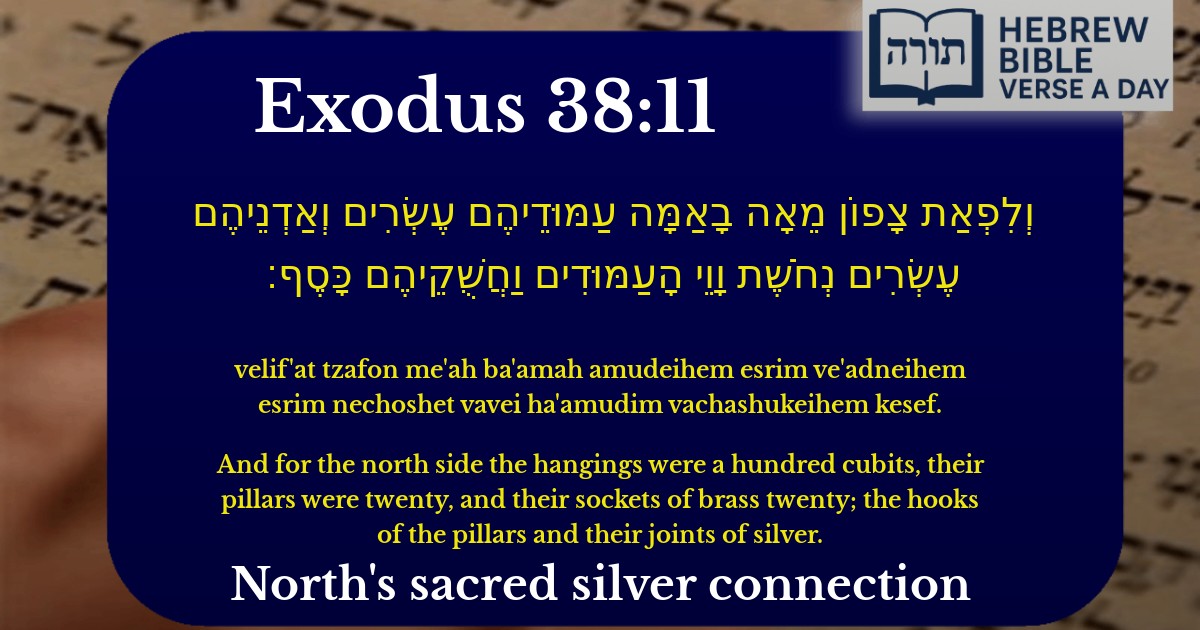Frequently Asked Questions
Q: What does Exodus 38:11 describe?
A: Exodus 38:11 describes the construction details of the north side of the Mishkan (Tabernacle) courtyard. It specifies the measurements (100 cubits), the number of pillars (20), their brass sockets, and the silver hooks and bands used in the structure.
Q: Why were the sockets made of brass (nechoshet)?
A: According to Rashi and other commentators, brass (nechoshet) was used for the sockets because it represents strength and durability. Brass was also more readily available than other metals for this purpose. The Talmud (Yoma 72a) teaches that materials in the Mishkan were chosen based on their symbolic meanings and practical uses.
Q: What is the significance of the silver hooks and bands mentioned in this verse?
A: The silver (kesef) hooks and bands held the curtains and pillars together, symbolizing unity and beauty in the Mishkan. The Midrash (Shemot Rabbah 35:2) explains that silver represents purity and refinement, showing the care taken in constructing a dwelling place for the Divine Presence.
Q: Why does the Torah give such detailed measurements of the Mishkan?
A: The Rambam (Hilchot Beit HaBechirah 1:12) explains that every detail of the Mishkan's construction has spiritual significance. The precise measurements teach us the importance of order, precision, and intentionality when creating sacred spaces. This applies today in how we design synagogues and approach mitzvot with exactness.
Q: How do the materials in this verse connect to Jewish values?
A: The combination of brass (strength) and silver (purity) in this verse teaches that holiness requires both durability and refinement. The Kli Yakar (Exodus 38:11) notes that these materials remind us to build our spiritual lives with strong foundations (like the brass sockets) while striving for higher ideals (like the silver adornments).


Context in the Mishkan
This verse (Shemot 27:11) describes the construction of the northern side of the courtyard (chatzer) of the Mishkan. The measurements and materials reflect the precision required in building a sacred space for Divine service, as emphasized throughout the Torah's instructions for the Mishkan.
Structural Details
Symbolism of Materials
The vavei ha'amudim (hooks) and chashukeihem (connecting rods) being silver (kesef) contrast with the brass sockets. The Kli Yakar explains that silver, associated with chesed (as in "kesef" relating to yearning), signifies the spiritual aspiration elevating the physical structure.
Directional Significance
The north (tzafon) is linked to hidden wisdom ("tzafun" meaning hidden - Zohar III:127a). The Vilna Gaon teaches that the northern side's construction hints at the concealed aspects of Torah awaiting revelation through diligent study.